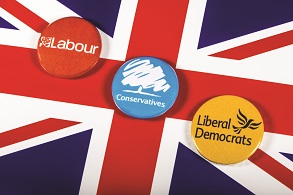Comment / It’s the how that’s important
At one moment, the general election manifestos, looked at from a health perspective, are an exercise in who loves the NHS most. Then in the next paragraph each party is stoking voter fears over whether the service can remain a going concern under their opponents’ management.
The NHS and social care have enjoyed a relatively high profile in the election to date – ensuring the campaign isn’t solely about the undeniably important Brexit question. Quite right too. The challenges facing the care services as a result of demographic pressures and current financial situation are extreme. We need big, well-thought-through solutions and we need the public engaged in a debate around those solutions and their implications (see Mark Orchard’s comment above).

The problem is that, at the high level at which manifestos inevitably operate, it can be hard to argue against any of the proposals. The ambitions set out for better, sustainable services are often common to all parties. The differences are likely to be in how the different parties would set about trying to achieve those ambitions – and whether voters believe they are actually capable of delivering them in practice. All the main party manifestos, for example, promise additional funding and more integrated services. So how should the person on the street choose between the different offers?
Funding is clearly a fundamental issue. But understanding whether the service needs £8bn extra, £9bn or £12bn is not an easy judgement for a finance director or economist, let alone a general member of the public.
Perhaps that is another argument for creating a link between health (or health and social care) funding and gross domestic product – a link that has been backed by the HFMA and others in the run-up to the election.
There is some sense in linking a country’s prosperity to its spending on health – as a country becomes more prosperous, often on the back of growing population, so health spending will need to rise. That would still leave a major job in setting what that proportion should be and understanding exactly what we mean by health spending.
As we explain in our cover feature this month, economists and politicians bandy around percentages relating to different definitions of health spending. You might hear a figure for health spending that includes public and private spending on health or just government-funded health spending. That might include capital spending and aspects of social care – or it might not. Definitions have also changed over time, so comparing current proportions with those of former years may not be a fair comparison.
That is not an argument against making the link (not promised explicitly by any party, although it might be an outcome of creating an Office of Budget Responsibility-type body). But it is an argument for ensuring you know what people mean when they make references to establishing such a link.
Integration is another common ambition in the manifestos. Again, who would argue against more integrated care? But how should that integration be put into practice? Formal integration and pooled budgets or more partnership working?
Canterbury District Health Board in New Zealand is one of the more advanced ‘integrated’ health systems. Allocations there do cover health and social care, but services are delivered across an alliance of in-house and external providers sharing risks and rewards across the system.
We need to explore such approaches in shaping our own path to integration while also learning more closer to home, with UK care systems following different approaches with the same goals. In many ways, there is already a consensus around the need for transformation to meet current challenges. The manifestos don’t really paint different pictures for how care services will look in future. But they may well represent real choices in whether, or how quickly, those ambitions can be reached.
Related content
We are excited to bring you a fun packed Eastern Branch Conference in 2025 over three days.
This event is for those that will benefit from an overview of costing in the NHS or those new to costing and will cover why we cost and the processes.